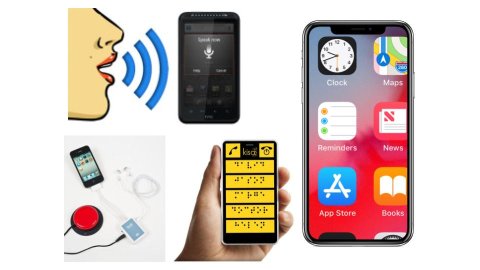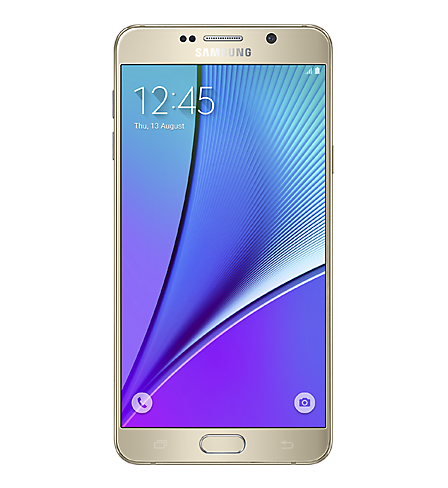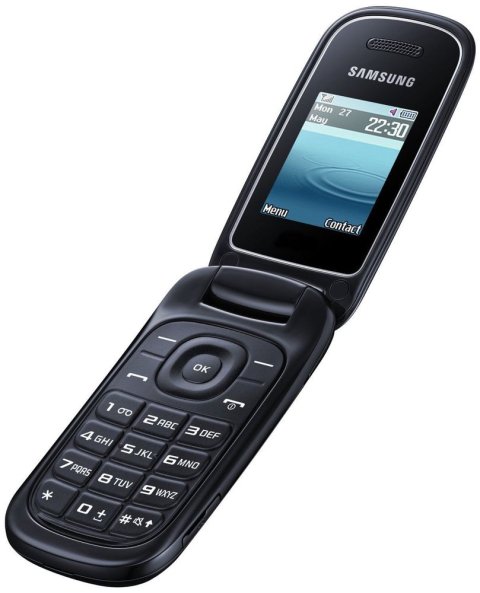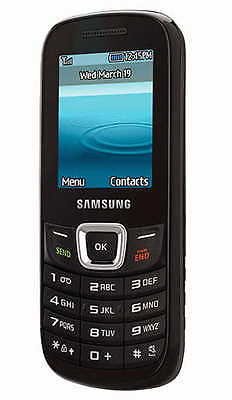Accessibility Features in Mobile Phones (Smart and Simple) GARI [Generic Entry]
Product Description:
Modern phones have many different accessibility features built into them. In addition, there are phones designed specifically for different disability groups.
The Global Accessibility Reporting Initiative (GARI) collects all of the information on phones from each manufacturer and provides a detailed search capability to allow you to find phones with just the features you are interested in. Because the phones that are available change every month -- we do not list the individual phones here in the Unified Listing. Instead, we provide this generic entry describing all of the different types of features that can be found on phones from different manufacturers -- along with a link to the GARI site where you can find the latest information on which phones are available with which features from each manufacturer and each area of the world.
The direct link to the GARI database is https://www.gari.info/
Different Phones for Different Users
When looking at phones for different users, it is important to consider both the features and the physical form of the phone. Some major types of phones that you might want to consider include:
- Physical type
- Flip phone (or clamshell) - can automatically answer when you open it and hang up when you close it. (see picture)
- CandyBar phone - phone that does not open but is rectangular in shape. Different sizes make it easier or harder to hold or use with one hand.
- Slide or twist etc phones - similar to flip phone except that they open up by sliding open or twisting etc
- Capabilities
- Smartphones - usually (but not always) candy bar in shape but having many caps
- Simple phone - phone that is specifically designed to have reduced features and be very easy to use.
Range of Features in Modern Phones
We provide both a short list of the major features of phones today -- and a comprehensive list (below) of all of the features tracked in the GARI database.
Major Accessibility Features
- Keyboard
- External Keyboard Support
- Backlight for Keypad
- Differentiation of Function Keys
- Key Identification - being physically separate.
- Easy to Press Keys
- Tactile Key Marker - '5', 'F' & 'J'
- Alternate input
- Touch Screen
- Predictive Text Input
- Stylus or Prosthetic Device support
- Gesture-Based Navigation
- Voice Recognition for Dialing
- Voice Recognition for Accessing Features
- Hand Movement
- External Switch / Pointer Support
- Voice Recognition for Dialing or Accessing Features
- Personalized Shortcuts
- Alternate Output
- Audible Cues - Charging, volume, calls, power, battery
- Voice Output of Caller ID from Contacts List
- Voice Output of SMS
- Voiced Menus
- Screen Reader
- Screen Magnifier
- Braille Display Support
- High Contrast Mode
- Web Browser Zoom
- Display Characteristics - Symbols/Icons, Colour Differentiation, Backlight for Display, Adjustable Brightness Control, Adjustable Contrast Control
- Adjustable Font - Size, Style
- Headset
- Call/Answer Features
- Any Key Answering
- Automatic Redial
- Automatic Answer
- Speaker-phone capable
- Speed Dial
- Ring Tone Variations
- Handling
- Lanyard Pin for key ring or Lanyard Strap
- Ease of Opening for Clam Shell/Flip Phone/Slider
- Anti-slip Features
- Easy Battery Placement
- Other Capabilities
- Ability to install third party applications or apps.
- Supports Accessibility APIs
- Internet Capability
Features Catalogued in the GARI Database:
Hardware Accessibility Features and Their Functions in Mobile Phones
Feature:
Function:
Dedicated and clearly distinguishable key to lock the screen
The device has a dedicated and clearly distinguishable key to lock the screen.
Dedicated and clearly distinguishable volume keys
The device has dedicated and clearly distinguishable volume keys.
Manufacturer custom overlay of OS
The device runs a customized manufacturer overlay of the operating system.
Emergency services & location
Does the device support handset-based location, on top of network-based location, to locate the call when calling emergency services?
External Keyboard Support
You can connect an external keyboard to the device.
Supports ability to install third party applications or apps.
You can install third party applications for example from an approved application store.
Internet Capability
You can use the phone to browse websites and use other internet-based services.
Display Characteristics - Screen Flicker
The main display does not flicker at a rate that could cause problems for people with photo-epilepsy (between 2 Hz and 60 Hz).
Backlight for Keypad
Keys light up so the numbers and labels are easier to read.
Differentiation of Function Keys
The number keys have a different color or shape from the other keys, making them easier to tell apart by touch or by sight.
Lanyard Pin for key ring or Lanyard Strap
Has a small bar allowing a key ring or neck strap (lanyard) to be attached.
Ease of Opening for Clam Shell/Flip Phone/Slider
Can be opened using one hand (only relevant for phones that have to be opened - ‘clam shell’, ‘flip’ or ‘slider’ designs).
Anti-slip Features
Has a non-slip coating or ridges to prevent it slipping out of your hand.
Keypad Layout
The keypad is laid out like a QWERTY typewriter keyboard.
Key Identification
Each key can easily be distinguished from the surrounding keys, reducing the chance that you will press the wrong one.
Easy to Press Keys
Keys on the keypad are easy to press.
Easy Battery Placement
Is the Battery marked for proper orientation/placement?
Touch Screen - Heat Activated
If the device has a touchscreen, is it capacitive (sometimes referred to as heat activated)?
Touch Screen
Does the device have a touch screen?
Headset - plug connected
You can plug in a headset containing headphones and a microphone. This allows you to answer calls, listen, and talk without holding the phone. This can mean better call quality for some people and is useful if you have trouble holding a phone.
Mobility/Dexterity Features and their Functions in Mobile Phones
Feature:
Function:
Text-to-Speech / Dictation
The device converts what the user says (punctuation included) into text.
Personal Assistant / Voice Control
Personal Assistant / Voice Control
Supports Gesture Based Navigation
You can use simple gestures to enter text or navigate your device (e.g., Back, Home).
Stylus or Prosthetic Device support
Do buttons and screen respond to a prosthetic device, pointing device or stylus? A prosthetic device is an artificial device that serves as a replacement for a body part.
External Switch / Pointer Support
You can connect an external switch or use head and/or eye movements to move the focus or pointer on the device's screen.
Visible indicators are used to highlight the user interface control with current focus.
Visible indicators are used to highlight the user interface control with current focus.
Voice Recognition for Accessing Features
Allows you to activate features by speaking commands into the phone, reducing the need to use the keypad.
Hand Movement
Controls do not require you to pinch or twist them with your fingers, or rotate your wrist.
Voice Recognition for Dialing
Allows you to dial a number by speaking the person’s name, if it is stored in your contact list (a personal ‘telephone book’ you create in your phone).
Any Key Answering
Can the user answer the call by pressing any key?
Automatic Redial
You can set it to automatically redial if the number you called is busy or unavailable.
Automatic Answer
You can set it to answer all calls automatically without you having to do anything.
Flat Back for Table Top Operation
Has a flat back, so it can be used while it is lying on a table.
Device Coupling - Bluetooth/WLAN
Allows customized devices to work with the phone. Device can be connected to the phone by using Bluetooth/wireless LAN (radio signals which travel through the air and may also be able to pass through walls or other solid objects).
Device Coupling - Infrared
Allows customized devices to work with the phone. Device can be connected to the phone by using infrared signal (which travels through the air like a radio wave but cannot pass through walls or other solid objects).
Device Coupling - Cable
Allows customized devices to work with the phone. Device can be connected to the phone by using a cable (an electrical wire).
Guarded/Recessed Keys
Individual keys are recessed or guarded in some way to reduce the chance that you will press the wrong key.
Predictive Text Input
Helps you write text messages more quickly by predicting words from the first few letters you type.
Text Messaging Service Capable
Can all the text message features supported be read, composed and sent using the phone's screen and/or keypad.
Speaker-phone capable
Hands free operation during dialing and after the call has been initiated.
Vision Accessibility Features and Their Functions in Mobile Phones
Feature:
Function:
Haptic Feedback
The device supports a tactile feedback system which uses different forces and vibrations to let the user know that a function has been carried out.
Audible Cues - Enhancements
Makes a sound when an accessory is connected or disconnected.
Audible Cues - Charging
Makes a sound when the battery/device has reached full charge or when you tab on the battery icon.
Screen Reader
A mode in which onscreen information is made available via text to speech and the device is operable without vision.
Screen Magnifier
Does the screen magnifier enlarge all views, including the web?
Braille Display Support
Does the device support a braille display?
Web Browser Zoom
You can magnify web content when using the internet browser.
Speed Dial
You can assign speed dial short cut keys to your contacts.
Supports Accessibility APIs
APIs allow accessibility software programs to communicate with the device (although there may be some limits).
High Contrast Mode
The phone comes with at least one high contrast mode.
Display Characteristics - Symbols/Icons
Menus can be displayed using symbols or pictures in a grid layout. This can make them easier for some people to understand or remember.
Display Characteristics - Color Differentiation
The information presented on the display does not rely on color perception for understanding (e.g. you do not have to be able to distinguish red symbols from green symbols).
Display Characteristics - Backlight for Display
The display lights up to make it easier to read in the dark.
Display Characteristics - Adjustable Brightness Control
You can adjust the brightness of the display to make it easier to read.
Voice Output of Caller ID from Contacts List
When you receive a call, it speaks the caller’s name if it is stored in your contact list.
Voice Output of SMS: inbuilt
Can read text messages out loud to you.
Display Characteristics - Adjustable Contrast Control
You can adjust the contrast of the display to make text and symbols easier to see against the background.
Voiced Menus
Speaks the menu options, allowing you to access functions even if you cannot read the display.
Ring Tone Variations
You can set it to use different ring tones for different people when they call you.
Voice Recognition for Dialing or Accessing Features
Voice Commands can be used for dialing or accessing features on the phone.
Personalized Shortcuts
You can assign a particular feature to a single key or a short key sequence.
Automatic Features - Automatic Answer
Does the phone support automatic answering of calls?
Adjustable Font - Size
You can make the text on the display larger or smaller to make it easier to read.
Adjustable Font - Style
You can change the font (typeface) used for the text on the display, which may make it easier to read.
Audible Cues - Volume
Is there a audible cue to indicate a change in the volume level?
Audible Cues - Calls
If another call comes in while you are still on a call, it makes a sound to tell you there is a call waiting.
Audible Cues - Power
Makes a sound when you press the power on/off button, so you know it has been pressed.
Audible Cues - Battery
Makes sounds to tell you when the battery is running out or when it is recharging.
Audible Identification of Keys - Functions
The sounds you hear when you press a key are different for number keys and function keys, so you can easily tell them apart.
Audible Identification of Keys - Spoken
When you press a number key the number is spoken out, so you know you have pressed the correct one.
Key Feedback - Audible
When you press a key it makes a sound, so you know it has been pressed.
Key Feedback - Tactile
When you press a key you can feel a physical click, so you know it has been pressed.
Standard Number Key Layout
The number keys are laid out in the standard way with 1 2 3 at the top and * 0 # at the bottom.
Tactile Key Marker - '5'
The number ‘5’ key has a raised dot or bump on it so you can distinguish it by touch.
Tactile Key Markers - 'F' & 'J'
The 'F' and 'J' keys have raised dots or bumps on them so you can distinguish them by touch (only relevant for phones that have a QWERTY typewriter-style keypad).
Hearing/Speech Features and Their Functions in Mobile Phones
Feature:
Function:
Allows for sign language communication
Does the device screen support at least 20 frames per second? (minimum for quality sign language communication)
Flashlight Notifications
The device can be configured to alert the user to notifications through flashing the light.
Real-time-text capability
The device supports real-time-text (RTT) capability provided that the network it is operating on also supports RTT.
Hearing Aid or "HAC" Setting
The device has a user setting designed to reduce issues related to interference buzzing for hearing aid users in telecoil mode. Does not guarantee total clarity.
Adjustable Vibrating Alerts
Allows users to select different vibration settings for various notifications.
Supports Closed Captioning for Web Video or Streaming
Device is capable of displaying closed captioning that is included in a video or video stream.
Front Facing Camera
Allows the front facing camera to be used in signing or two-way video conferencing.
Adjustable Maximum Volume Control
Allows you to change the default volume control limit.
Mono Audio
The device allows for both channels of audio to be routed to one single earpiece.
Two-way Video Communications – using wireless LAN networks
Allows you to make video calls in which you can see the other person and they can see you using your wireless LAN network.
Two-way Video Communications – using mobile networks
Allows you to make video calls in which you can see the other person and they can see you using your mobile network.
Visual Alerts - Electronic Message
When a text, e-mail or IM comes in, it displays a visual alert to indicate it has been received.
Text phone/TTY compatibility
This product is compatible with the Textphone/TTY for the deaf.
Call Logs
Lists all the calls you have dialed, received or missed.
Ringer Volume Adjustable
You can adjust the ringing volume to make it louder or quieter.
Key Feedback - Displayed
When you press the number keys the number is displayed on the screen so you can check that it is correct before dialing.
Hearing Aid T-coil Coupling
The device is able to connect with a sufficiently immune hearing aid in "Telecoil mode" without significant interference buzzing noise. Does not guarantee total clarity.
Video Conferencing
Whether Two-way Video Conferencing is supported.
SMS Personalization and Reuse
Allows you to create standard text messages that you can quickly send to anyone without having to retype them each time. For example, “I’m in a meeting, I’ll call you back”.
Messaging Options - Predictive Text
Helps you write text messages more quickly by predicting words from the first few letters you type.
Messaging Options - MMS
You can send and receive multimedia messages, which can include photographs, audio and video clips.
Messaging Options - IM
You can send and receive ‘instant messenger’ (IM) messages.
Messaging Options - Email
Whether email is supported.
Messaging Options - Text Messaging/SMS
You can send and receive text messages.
Visual Indicators on Display - Enhancements
Whether there is a visual indicator on the display to indicate whether any enhancements are connected (Loopset, Headset or TTY/Textphone).
Visual Indicators on Display - Line Status
Whether there is a visual indicator on the display to indicate the line status (i.e on-line).
Visual indicators on Display - Voice Mail
When someone has left a voice mail message, it displays a visual alert.
Visual Indicators on Display - Volume Control
The display shows the current volume level.
Visual indicators on Display - Network
The display shows what type of network you are connected to (e.g. 3G/LTE or WiFi).
Visual Indicators on Display - Battery
The display shows the current battery strength and the network signal strength.
Visual Alerts - Incoming Calls
When a call comes in, it displays a visual alert, such as the caller’s name or photo if it is stored in your contact list.
Visual Alerts - Other
Whether there are other visual alerts /text displays that are not mentioned above.
Visual Alerts - Battery
Displays a visual alert to tell you when the battery is running out or when it is recharging.
Visual Alerts - Power
When you press the power on/off button a visual alert is shown (e.g. a light), so you know it’s been pressed.
Vibrating alert
The phone can be set to vibrate when it receives a call or text message or when it gives a warning alert.
Improved Call Quality
Can the device be adjusted to improve call quality against ambient noise?
Cognition Features and Their Functions in Mobile Phones
Feature:
Function:
Voice Notes
Allows you to record, save and play back a short voice reminder.
Simplify Display
Allows you to disable or conceal unneeded features/programs or icons.
GPS Capability
The device has Global Positioning System (GPS) capability.
Copy and Paste
Does the device support a copy and paste functionality for text entry?
Simple Instructions
Instructions and messages that are displayed on screen use simple language.
Photo Associated Telephone Book
You can add photos of people next to their numbers in your contact list (a personal ‘telephone book’ you create in the phone).
Assistance Instructions
When you need to provide input (e.g. when setting up the phone or when it asks you a question), extra helpful instructions are provided, explaining what you need to do.
Simple Reminders
All text alerts and other reminders that are displayed on the screen use simple, easy to understand language.
No Screen Timeout
When the phone displays an alert or a question that requires you to give an answer, e.g. by clicking a “Yes” or “No” button or by typing in your PIN number, it will wait for your response. This can be helpful for people who find it difficult to decide what to answer or to enter the answer quickly.
Additional Accessibility Features and their Functions in Mobile Phones
Feature:
Function:
Alternative Format User Manual
The User Manual is available in alternative formats.




